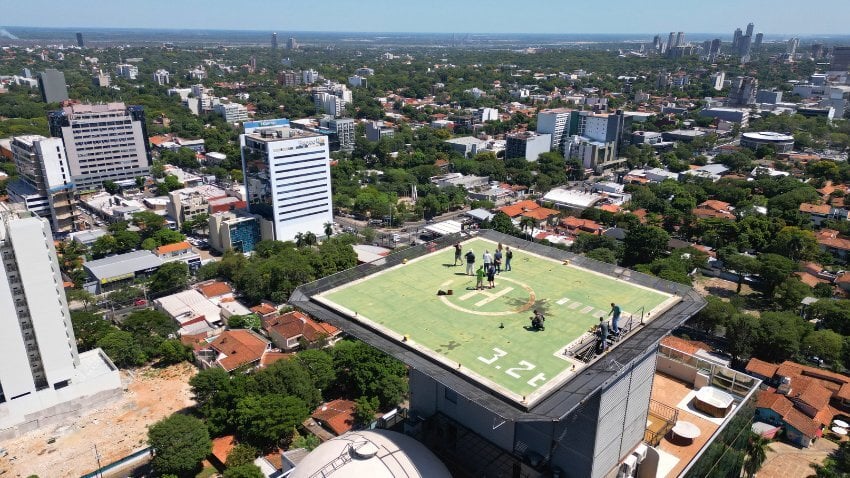The Different Types Of Residency You Need To Know
People choose the expat lifestyle for many reasons. Some seek greater personal freedom and better financial opportunities, while others want a lower...

5 min read
The remarkable economic recovery in Argentina continues to make headlines worldwide. Although Argentina has faced decades of high inflation, things are changing quickly due to President Javier Milei's recent radical reforms. With the inflation rate dropping to approximately 39% from 290% over the past year, the hopes and morale of the Argentine people are at an all-time high. It’s certainly a country worth keeping on your radar.
For now, Argentina can be an excellent place to spend short periods of time without triggering tax residency, while still enjoying the benefits of the strong purchasing power of the U.S. dollar. This makes it especially appealing for digital nomads with income streams abroad, who can experience a high quality of life at a fraction of the cost.
If you're curious about the cost of living in Argentina and how you might improve your lifestyle on the same—or even a smaller—budget, this article is for you.
Discussing living expenses is never one-size-fits-all, as it depends on the kind of life you want to live. However, the average monthly cost of living in Argentina will give you a sound price range to make your own evaluation.
On average, a single person in Argentina will spend approximately $700 USD per month, excluding rent. This estimate includes utilities, groceries, dining out once a week, public transportation, and basic clothing. Even when factoring in rent, a budget of $950 to $1,200 USD per month is generally sufficient.
If you're considering settling in Argentina as a family, the cost of living for a family of four is even more favourable. A family of four may spend around $2,500 USD for their average monthly needs, excluding rent. Including an average rent will increase the monthly cost to between $3,200 USD and $3,500 USD. If you opt for private schools for your kids, private healthcare for your family, and perhaps an upscale neighbourhood for your comfort, then the cost can easily increase. However, considering Argentina’s modern infrastructure and lifestyle options, the overall cost of living is very affordable.
Rent is typically the largest expense in any budget, no matter where you live. Naturally, rental prices vary depending on the property’s features and location. Would you prefer to live in downtown Buenos Aires, the famous Palermo Soho district, or perhaps in a quieter, smaller city? Whatever your answer, I have provided the average rent cost in the table below.
|
Type of Housing |
Average Monthly Cost (USD) |
|
1-Bedroom Apartment – City Centre |
$507 |
|
1-Bedroom Apartment – Outside Centre |
$345 |
|
3-Bedroom Apartment – City Centre |
$905 |
|
3-Bedroom Apartment – Outside Centre |
$ 640 |
One of the most beautiful parts of living in South America is that you’ll likely be living in a food- and water-sufficient country. Argentina is an exceptional country in this matter. Local produce and food products are very affordable. However, due to import duties and taxes, the prices of imported foods and beverages can be significantly higher than expected. The table below illustrates the average cost of some common grocery items.
|
Common Grocery Items |
Average Price (USD) |
|
Dozen Eggs |
$2.70 |
|
Chicken Fillets (1kg) |
$7 |
|
Beef Round (1 kg) |
$9 |
|
Bananas (1kg) |
$2 |
|
Local Cheese (1kg) |
$10.30 |
|
Wine (Mid-range Bottle) |
$5 |
|
Domestic Beer (0.5L Bottle) |
$1.9 |
If you appreciate beef steak like I do, you’ll enjoy living in Argentina every time you stop by a parilla to taste the most wonderful steaks in the world. Argentine cuisine is rich in many ways, which you will easily discover by eating at a restaurant serving homemade food. Home-sick or world cuisine lovers will find the best international restaurants in upscale neighbourhoods. To give you an idea of restaurant costs, the table below provides an overview of food prices at various restaurants.
|
Dining Options |
Average Price (USD) |
|
Meal at Local Restaurant |
$13 |
|
3-Course Dinner for Two (Mid-range) |
$50 |
|
Cappuccino |
$3.5 |
|
McDonald’s Combo Meal |
$10 |
Argentina’s transportation system is defined by robust public transit networks rather than widespread car dependency. Most urban residents use buses, subways, and trains as their primary means of commuting. However, due to import taxes, cars may be more expensive than you are accustomed to. I have included a variety of commuting prices in the table below.
|
Transportation-Related Costs |
Average Price (USD) |
|
One-Way Bus Ticket |
$0.70 |
|
Monthly Public Transport Pass |
$21 |
|
Gasoline (1 Litre) |
$1.10 |
|
New Toyota Corolla |
$30,500 |
Argentina’s urban infrastructure is strong, with generally dependable electricity, water, and internet. Internet access is extensive and of high quality in cities. Utility costs remain moderate by international standards, although they are subject to inflation and currency fluctuations. The table below shows common utility prices.
|
Utility & Communication Costs |
Average Price (USD) |
|
Utilities (Electricity, Water, Garbage) |
$92 |
|
High-Speed Internet (100 Mbps+) |
$23 |
|
Mobile Phone Plan (Unlimited Data) |
$16 |
Private clinics and hospitals in Argentina are known for high standards of care, modern facilities, and short wait times. Many expats opt for private health insurance to access a broader range of private healthcare providers with greater convenience and efficiency. Although fees for private insurance in Argentina have risen due to inflation, a basic private health insurance plan still averages between $60 and $120 USD per month.
To appreciate the advantages of Argentina’s healthcare system, compare it with what you’re accustomed to back home. In the U.S., basic health insurance often starts at approximately $400 USD per month, but it does not cover many essential services. Unexpected health problems can quickly make healthcare unaffordable for many Americans. In Canada, hospitals are overloaded, and the healthcare workforce is underfunded as a whole. Additionally, opting for private healthcare is often limited in Canada.
In contrast, healthcare costs in Argentina are significantly more affordable and accessible, making quality care readily available to most expats with ease.
When comparing Argentina with Canada and the United States, it is clear that living in either of the North American countries comes with significantly higher costs. Excluding rent, the cost of living in Canada is 55.1% higher, while in the United States, it is 65.8% higher than in Argentina. When the cost of housing is factored in, the gap widens even further—Canada’s overall cost of living is 76.7% higher, and U.S. costs are 100.1% higher.
Housing costs are especially striking. Rent prices in Canada are 169.1% higher, and in the United States, they soar to 246.7% higher than in Argentina. Other daily expenses also show significant differences: restaurant prices are 32.5% higher in Canada and 47.1% higher in the U.S.. Additionally, groceries cost 71.8% more in Canada and 80.4% more in the U.S. compared to Argentina.
For individuals or families seeking a more affordable lifestyle without sacrificing comfort or access to modern amenities, Argentina stands out as a compelling alternative. Its lower costs across housing, food, and everyday services make it an increasingly attractive destination for expats, retirees, and remote workers looking to maximize their income.
Related content: Should You Move To Argentina? Here's What You Must Know

Palermo, a neighbourhood of Buenos Aires, Argentina
Argentina is a land of extraordinary potential—rich in natural beauty, abundant resources, and home to resilient, talented people. With world-class agriculture, vast energy reserves, breathtaking landscapes from mountains to coastlines, and a vibrant cultural heritage, Argentina offers a truly unique environment.
While I don’t currently recommend Argentina as a Plan-B destination, it’s certainly a country to keep on your radar. As it enters a new era of optimism and renewal, it may become an attractive option in the future.
If you’re not certain where to begin building your Plan-B, download our free special report on ‘Plan-B Residencies & Instant Citizenships.’
If you want the best intel from the expat world, including profitable offshore opportunities, little-known tax-saving strategies, and hard-won insights on immigration, passports, and Plan-B residencies, all delivered to your inbox every single week, then join our daily correspondence, EMS Pulse®. Currently enjoyed by over 84,000 expats and expat-hopefuls worldwide. Fill in the form below to join our newsletter free:

Written by Mikkel Thorup
Mikkel Thorup is the world’s most sought-after expat consultant. He focuses on helping high-net-worth private clients to legally mitigate tax liabilities, obtain a second residency and citizenship, and assemble a portfolio of foreign investments including international real estate, timber plantations, agricultural land and other hard-money tangible assets. Mikkel is the Founder and CEO at Expat Money®, a private consulting firm started in 2017. He hosts the popular weekly podcast, the Expat Money Show, and wrote the definitive #1-Best Selling book Expat Secrets - How To Pay Zero Taxes, Live Overseas And Make Giant Piles Of Money, and his second book: Expats Guide On Moving To Mexico.
.jpg)
People choose the expat lifestyle for many reasons. Some seek greater personal freedom and better financial opportunities, while others want a lower...

What would you do if tensions between world powers escalated to nuclear conflict? With the ongoing crises in the Middle East and Ukraine, many people...

Every year brings new lessons, opportunities, and milestones worth revisiting. As 2025 comes to a close, we’re taking a moment to reflect on the...